Infected Nipple Piercing
Nipple Piercing
Nipple piercings is considered to be one of the most popular type of body piercings for both men and women. If the procedure is done incorrectly or the wound is not properly cared for, it may lead to an infection of the site of the piercing [1, 2].
What is Nipple Piercing?
Piercing of the nipples have been performed as early as the 1300’s. In this method, the jewelry is carefully placed at the erect part of the nipple. The fatty tissues of the breasts and the areola must be avoided because it may lead to mastitis or inflammation of the milk ducts of the breast. The jewelry may be placed at any angle and it is not uncommon to have more than 1 piercing on the same nipple.
Examples of jewelries that may be used are dumbbells, rings and a D-shaped ring wherein the straight side goes into the nipple. They are usually made up of gold, white gold, gold-plated steel and steel. Individuals whose nipples go flat when their breasts become flaccid must be made aware of this to avoid hitting the areola and cause increased discomfort [1, 2].
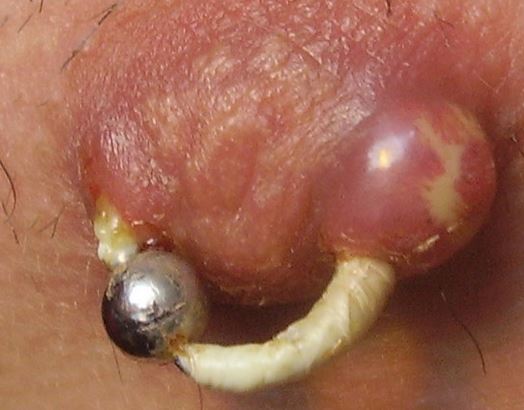
Figure 1 shows an example of a Infected nipple piercing.
Causes of Infected Nipple Piercing
Majority of nipple pierce infections occur because of improper wound aftercare. Bacteria may be introduced to the site if it is not cleaned regularly or if the jewelry is played with dirty hands. There are evidences that show that body fluids such as saliva may infect new nipple piercings. These piercings are also associated to other infections such as HIV, Hepatitis B and Hepatitis C [1, 2, 3].
The piercer also plays an important role in such that failure to disinfect the equipment and environment may increase the risk of infection. Other instances would include improper hand-washing and gloving while before doing the procedure and reusing invasive equipment without proper cleaning and disinfection [1, 3].
Signs and Symptoms
Some of the signs that may be present in an individual with an infected nipple piercing are green or yellowish discharge, swelling, redness, foul odor, rash and fever. The severity of the symptoms greatly varies but these would indicate the presence of a bacterial infection. Once these symptoms have appeared, it is important to consult a physician immediately in order to receive appropriate medical intervention [3, 4].
Treatment of Infected Nipple Piercing
The primary goal of the treatment process is to resolve the existing infection and this will be achieved through the use of antibiotic agents. A physician may prescribe oral or topical medications. Patients should be advised to finish the entire course of the antibiotic treatment even if they are already feeling better.
This is to ensure that the infection is adequately treated and prevent resistance to the antibiotic agent. For severe types of infection that were not treated immediately, the nipple may be damaged and there may be a need to remove the nipple piercing. Pain relievers may also be given to help relieve the discomfort that may be felt [1, 3, 4, 5].
Prevention of Infected Nipple Piercing
The after-care is crucial in preventing infections in nipple piercings. Individuals who just got their piercings must be advised to avoid touching the jewelry or site while it is healing. If it is unavoidable, ensure that the hands are clean. Regularly cleaning the site with fragrance-free antibacterial soap is also recommended. As mentioned before, hands are preferred over washcloths in cleaning the jewelry.
Not only will it prevent accidentally ripping off the piercing, using a washcloth may also leave some threads which may become a cause of infection. If a nipple ring was used, the jewelry must be rotated while cleaning to ensure that its entirety is cleaned [1, 5].
Solutions that are alcohol-based, hydrogen peroxide and skin cleansers must not be used in cleaning the wound because they may prolong the healing time. Swimming while the piercing is healing should be avoided because the water may be a source of bacteria. Do not remove the jewelry from its site unless an infection is suspected. It may be impossible to return the piercing without the help of a professional piercer [1, 5, 6].
Potential Problems with Infected Nipple Piercing
There are several potential complications of having a nipple pierced and these events most commonly occur during the healing process [1, 2, 3].
Irritation
Some degree of irritation may be experienced while the nipple is healing. Swelling may be seen during the first few weeks and the wound may produce a white or yellowish exudate which turns may cause crusting in the jewelry. The nipple may still get irritated one year after the placement of the piercing [1, 3].
Tearing
The nipple piercings may be accidentally teared off while taking a shower, changing clothes or engaging in sexual activities. Piercings should be washed with hands instead of using a washcloth to prevent this from happening. Sexual partner must also be informed regarding any pain felt in the site of the piercing to avoid accidentally ripping the piercing [1, 3].
Migration
Migration may occur if the piercing is too shallow or if the jewelry is too heavy for the nipple. The body will attempt to push it towards the surface of the nipple and completely out of the body. Consultations to a professional must be done to find the appropriate jewelry to use and avoid migration from occurring [1, 3].
Mastitis
If the nipples are pierced too deep, it may affect the milk ducts. This resulting inflammation may cause fever, breast tenderness, swelling and redness. Mastitis should receive prompt medical attention because it may lead to formation of abscess in the area [1, 2, 3].
Pictures
Below are nipple piercing Pics & images
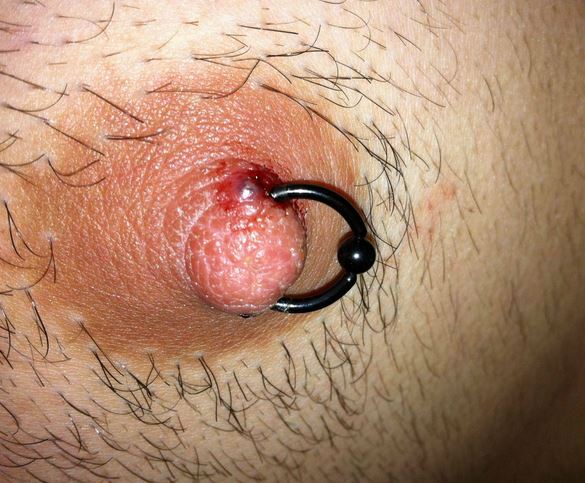
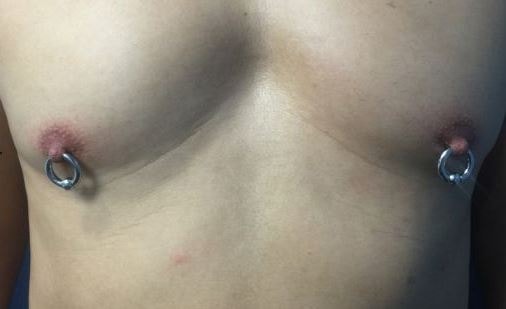
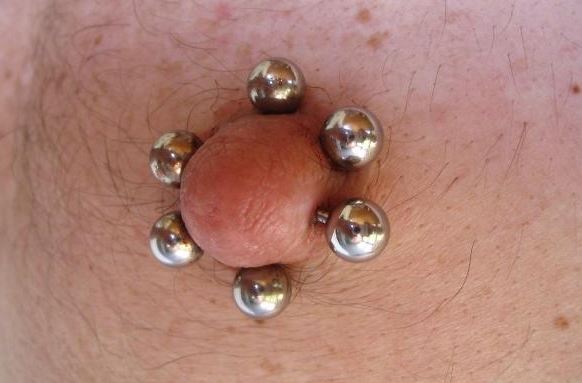
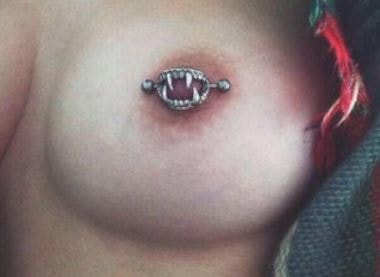
References
- Coffey, M. (2015). Nipple Piercing Problems. Retrieved from eHow: http://www.ehow.com/about_6620028_nipple-piercing-problems.html
- com. (2007, August 2). Nipple Piercing. Retrieved from BMEzine.com: https://wiki.bme.com/index.php?title=Nipple_Piercing
- Jamison, K. (2015). Nipple Piercing Infection. Retrieved from eHow: http://www.ehow.com/about_5445530_nipple-piercing-infection.html
- Forgan- Smith, G. (2013, July 18). How To Treat An Infected Piercing. Retrieved from The Healthy Bear: http://thehealthybear.com/infected-piercing/#lightbox/0/
- Skin-Artists. (2015). Nipple Piercing- Side Effects. Retrieved from Skin-Artists: http://www.skin-artists.com/nipple-piercing-effects.htm
- (2015). How to Treat Infected Piercings. Retrieved from WikiHow: http://www.wikihow.com/Treat-Infected-Piercings
